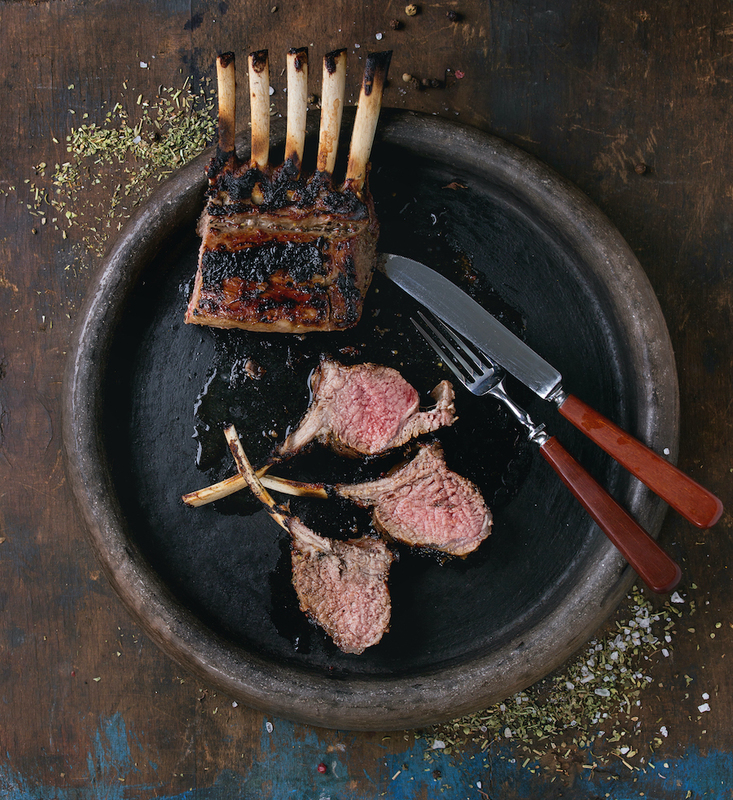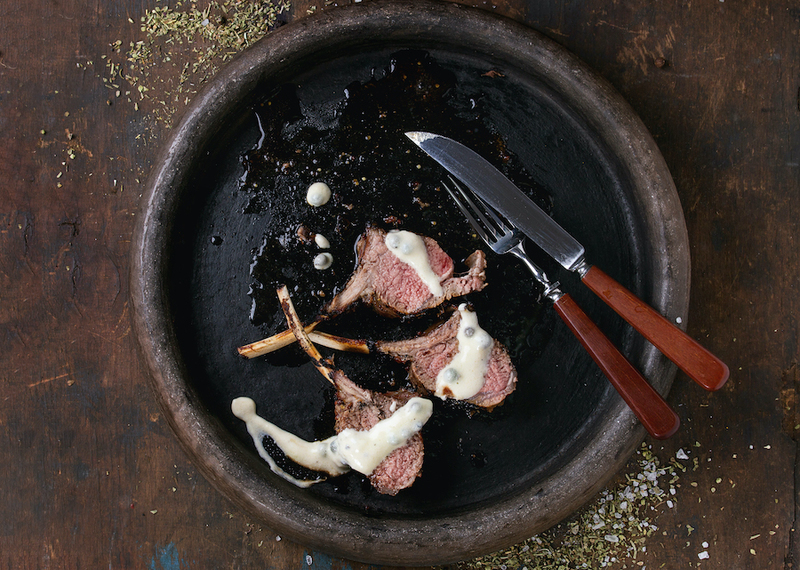Is Making Grilled Rack of Lamb Really This Simple?
The idea of serving a grilled rack of lamb may seem so fancy that an ordinary backyard barbecue enthusiast could never pull it off, even on a high-quality PGS Grill. Just looking at a grilled rack of lamb with its trimmed ribs and tender, juicy meat makes one firmly believe only a Chef de Cuisine in a five-star restaurant could pull it off. Nothing could be further from the truth.
The fact of the matter is that someone with modest cooking skills and a desire to expand their menu can prepare one of the fanciest cuts on a PGS Grill with ease. By following a few insider tips and exercising some due diligence, you could impress friends, family members, and even your boss with a delicious grilled rack of lamb.
How To Prepare a Rack of Lamb
It’s important to understand that when you purchase a rack of lamb, it likely comes with a fatty strip and silver skin that will need to be removed. Unlike many other choice cuts, these elements can detract from the flavor and lead to a barbecue grill disaster. That’s largely because excessive lamb fat can develop an unusual amount of melting, flood grates, and cause significant flare-ups.

Using a boning knife, slice a line between the loin and the fat cap. Position your boning knife at the base of the fat cap and carefully manipulate it by cutting under the fatty part while moving away from the loin. You will complete the task by removing the fat cap right off the top of the bones.
Above the soft loin is a layer of silver skin that top chefs typically remove as well. Silver skin generally turns into gristle and detracts from the flavor and eye-raising presentation. With your boning knife, go ahead and skillfully remove the silver skin using small, patient strokes. The goal is to remove the silver skin in thin strips without losing loin meat.
How to French Your Rack of Lamb
Frenching is the step top chefs use to transform the presentation of a grilled rack of lamb. With other top-tier cuts, a grilling enthusiast might be hesitant to remove meaty or even mildly fatty elements from bones. But this is not the case when preparing a grilled rack of lamb.
The process involves taking a boning knife and trimming away the fat and meat between the slim end of the ribs. A backyard chef may decide to trim away about half or less of the extended part of the ribs.
Start by slicing a straight line over the top of the ribs to create a visual path. Then, take your boning knife and insert it tip first between the ribs, following your line. Beginning at the point where you pierced the ribs, cut away at the membrane directly on the rib bones.
Using moderate pressure, push the end of the rib bones out and remove the section, trimming as needed. With the section removed, trim the exposed ribs to tidy them up before grilling. Don’t hesitate to use a clean cloth to remove any loose bits. At this point, you have completed a grilled rack of lamb preparation process some believe is reserved for top restaurant chefs.
How to Prepare PGS Grill for Indirect Grilling
Indirect grilling involves placing your menu options away from the grates closest to the heat source. By using the hot air that accumulates in a propane BBQ grill, select cuts such as a rack of lamb are gently cooked.
There are two ways grilling enthusiasts can put this strategy to work. If you possess enough warming rack space, the lamb can be secured on that indirect heat area. If you lack enough room on the warming rack, consider setting up on one side of the grates and only ignite the other side. Either way, you’ll position the grilled rack of lamb away from direct heat that typically leads to overcooking and unnecessary toughness.
How to Sear Grilled Rack of Lamb
Because the grilled rack of lamb uses mostly indirect heat, the exterior will not necessarily become crisp and lock in the succulent juices. That’s why searing is a must when preparing this five-star meal.
Using the matchless ignition, fire up one side of your PGS Grill to about 500 degrees. Season accordingly and place the rack with the fat side down directly on the grates or you can also use the sear burner. After no more than two minutes, flip the rack and repeat. Leading chefs indicate that searing before indirect cooking improves grilled rack of lamb flavor.
Finish Cooking on Indirect Heat Side of PGS Grill
Using an appropriate outdoor barbecue utensil, move the rack of lamb away from the direct heat and position it on the cooler side. At this juncture, additional seasoning is usually conducted. The internal temperature should reach 120 degrees if you like it rare. For medium-rare portions, the internal temperature should reach 125 degrees, and 130 degrees for medium servings. It’s important to use a quality meat thermometer whenever possible.
Simple Grilled Rack of Lamb Seasoning Recipe
It may seem counterintuitive, but seasoning a grilled rack of lamb is almost as easy as prepping burgers. Gather the following ingredients and keep them at the ready by your stainless steel gas grill.
- 1 tablespoon of sea salt.
- 1 teaspoon of ground black pepper.
- 1 sprig of fresh rosemary (chopped).
- 1 teaspoon of dried sage.
- 7 tablespoons of melted butter.
Chop the rosemary and mix the sage and rosemary into a small bowl. Before searing, rub the salt and pepper evenly on each side of the rack. After searing, slather on the melted butter and sprinkle on the seasoning mixture while the rack is meat-side down. Briefly grill on the indirect heat and then flip the cut, so it’s rib side down. Slather with butter and season the meaty side. Remove from heat when ready and allow the grilled rack of lamb to rest before serving warm.
There is also a wide range of glazes that some connoisseurs enjoy with a grilled rack of lamb. Don’t hesitate to make a side of glaze that complements the five-star meal.
At the beginning of this overview and preparation tips, making a grilled rack of lamb on your outdoor barbecue grill may have seemed like a Herculean task. There’s no reason to tell friends and family members it was actually pretty simple.


